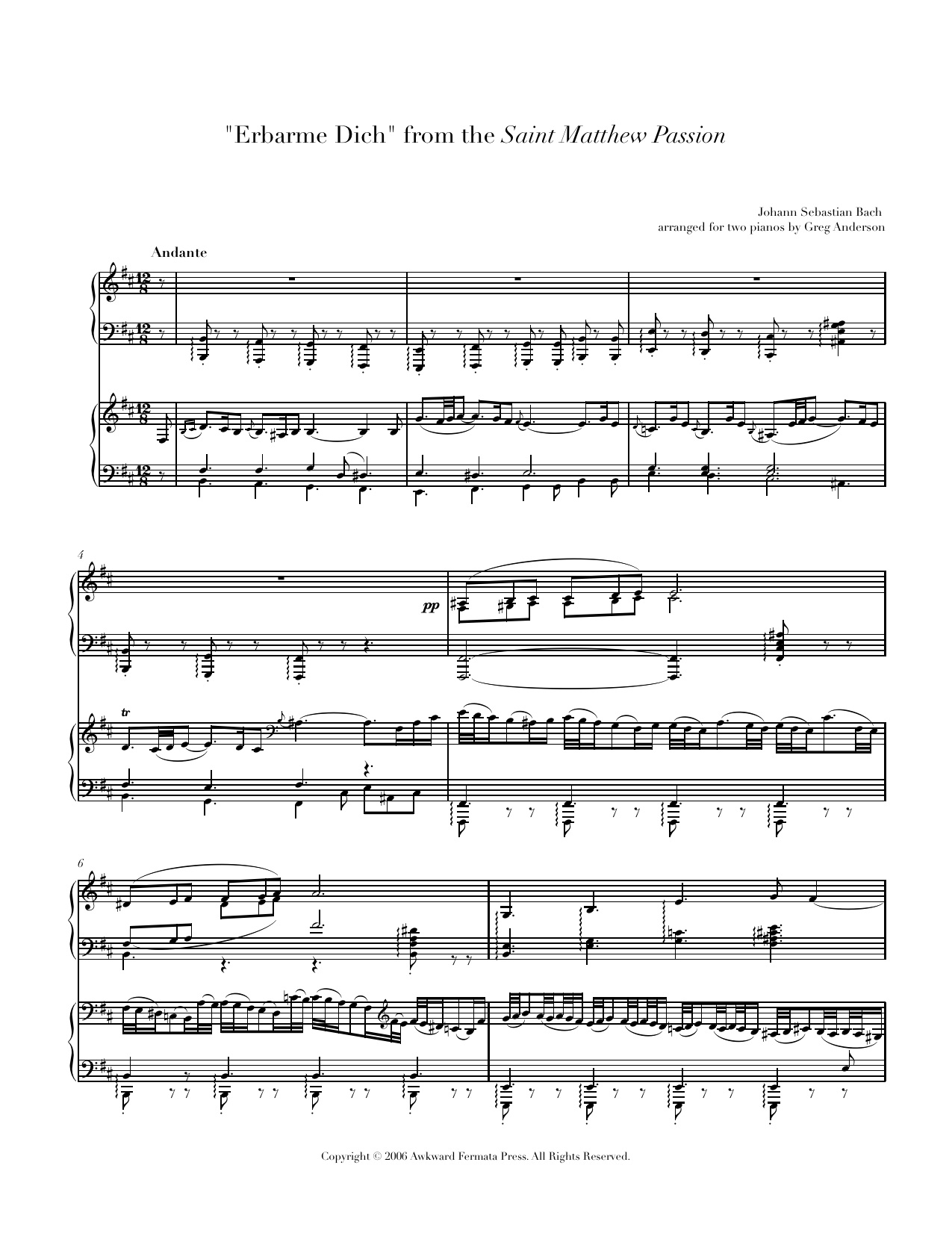BACH: Erbarme Dich
"Erbarme Dich" from the Saint Matthew Passion
by Johann Sebastian Bach
arranged for two pianos by Greg Anderson
"Erbarme Dich" from the Saint Matthew Passion
by Johann Sebastian Bach
arranged for two pianos by Greg Anderson
"Erbarme Dich" from the Saint Matthew Passion
by Johann Sebastian Bach
arranged for two pianos by Greg Anderson
- Buy "Reimagine," the CD/DVD combo featuring this work!
Although his oeuvre now stands at the apex of the canon, J.S. Bach was once music's greatest example of a forgotten genius. During his lifetime, his compositional style was already considered staid and old-fashioned, and after his death in 1750 his music was largely abandoned until the mid-19th century.
The first performance of the St. Matthew Passion was given in 1727. Considering it his most significant work, Bach revised it in 1736. Nonetheless, it was shelved after its initial performances in the St. Thomas Church and promptly neglected. The Passion received a second premiere of sorts in 1829 when the 19-year-old Felix Mendelssohn organized a performance and conducted the work for the first time since Bach did so himself. With this, the concept of "Classical Music" was born, and Bach's St. Matthew Passion has remained one of the monuments of the literature.
The St. Matthew Passion, which depicts the final sufferings, crucifixion, and rebirth of Jesus Christ, contains an aria of great sublimity, “Erbarme Dich.” Immediately following a recitative set to the Biblical text of Matthew 26:69-75 recounting Peter’s betrayal of Jesus, the aria expresses Peter’s penitence through the lamenting words of a poem by Bach’s contemporary, Picander: “Have mercy, my God, for my tears' sake. Look hither, heart and eyes weep bitterly before Thee.” This aria was originally scored as a duet between alto voice and solo violin, accompanied by strings and continuo. Peter’s weeping is characterized by melismatic vocal writing and the pervasive presence of appoggiaturas, descending basslines, and clashing dissonances.
The simple desire to perform this work of haunting beauty and emotional power inspired us to transcribe it for two pianos. We aimed to capture the profound sorrow of the aria and to convey that the music, regardless of its instrumentation, retains its perfect integrity. Without words or a variety of instruments at our disposal, we treat the music in an abstract manner, paring it down to its purest essence. The relatively monochromatic sonority of two pianos together highlights the music’s harmonic complexities; the conflict between the soaring melody and tormented dissonances become more palpable on the keyboard. Words are no longer necessary: the music speaks for itself, with poignancy and intensity.
© 2005 Anderson & Roe. All Rights Reserved.







